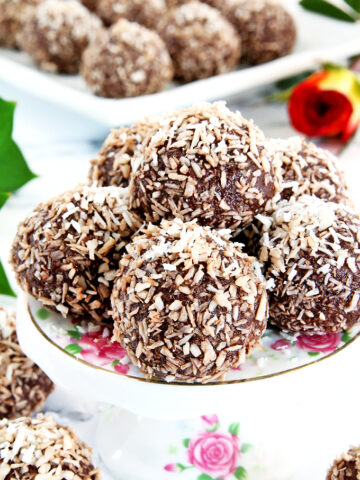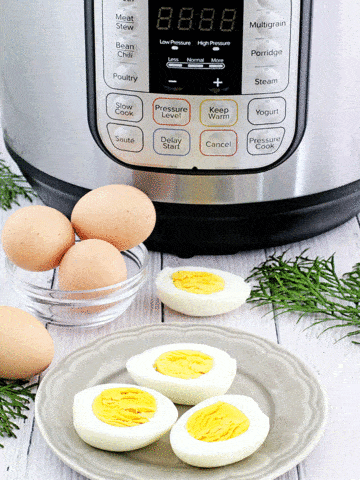Learning how to repot cucumber and tomato seedlings is an important step in growing your own produce at home. If you're looking to grow your own cucumbers and tomatoes, then starting with seedlings is a great way to go. However, as your seedlings grow, they will eventually outgrow their current containers and need to be transplanted into larger ones. This process is known as repotting, and it is essential to make sure that your cucumber seedlings continue to thrive and develop into healthy plants.

Even though you can purchase fresh produce at the farmer's market, I like to be sure that no chemicals will be used when I grow my garden plants. Growing cucumbers and tomatoes at home from seeds saves you so much money. This is especially true when you grow a large amount of them!
In this blog post, I will guide you through the steps of repotting your cucumber seedlings. This includes when to do it, what materials you'll need, and how to care for your plants after the transplant.
By the end of this post, you'll have all the information you need to successfully repot your cucumber seedlings and set them on the path to producing a bountiful crop.
Table of Contents
What are the Benefits of Repotting Cucumber and Tomato Seedlings?
Repotting cucumber and tomato seedlings may seem like extra effort if you're in a hurry, but there's a good reason for it! This additional step allows you to take advantage of their incredible ability to establish roots along their stems.
Cucumber and tomato seedlings are special in that they want their stems to be deeply buried. They can produce new roots (called adventitious roots) along their stems, allowing the plants to grow more vigorously.
In fact, if you live in a humid area, you may have seen tiny bumps (called nubs) on the stem grow into roots that grow above the ground. Every little bump on a cucumber or tomato stem has the potential to develop an adventitious root.
If these roots are given enough time, they will grow just like the ones below ground and will eventually be able to establish themselves in the ground.
When you plant cucumber and tomato seedlings deep in the soil, you encourage the new roots to grow. This makes the root system bigger and healthier, so the plant can take in more nutrients and stay put when it is planted in the ground later.
When to Repot Cucumbers and Tomato Seedlings
To speed up the growing process, I recommend soaking the seeds before sowing them. After starter plants are about 1 inch tall (2.5 cm) they need to be repotted into a larger container, so the root has more room to expand.
You can also tell when it's time to repot seedlings by their leaves. The first set of leaves that appear from the seed are called "seed leaves." The second set to appear are called "true leaves." These true leaves are the first ones to grow that are capable of photosynthesis, and they're an indicator that the seedling is ready to be repotted.
Supplies Need to Repot Cucumber and Tomato Seedlings
Cucumber and Tomato Starter Plants
These starter plants are usually grown in seed trays from the seed, but you can also buy and repot them straight from a nursery.
However, be careful when buying seedlings from a nursery or home improvement store. They may have been grown with pesticides. They may also have a higher chance of being infected with diseases or pests than ones you grow yourself.
4" Wide Pots
Fortunately, 4" pots are relatively inexpensive and can be reused time and time again. This is why I personally try to get decent-quality ones.
Also, I'd recommend going with plastic pots. This is because they're lighter to work with and you can squeeze the sides to get the soil loose when it's time for the plants to move again.
Plus, make sure you get pots with holes in the bottom. This ensures proper drainage and lets you water through a method called wicking (more on this below) if you choose to.
Potting Soil
Be sure to get potting soil for your seedlings and not a seed starter mix. Seed starter mixes help seeds germinate but don't have many nutrients for growing seedlings. Speaking of nutrients, it's hard to go wrong when choosing potting soil, but what you're looking for is its N-P-K (nitrogen-phosphorous-potassium) ratio. In general, a 1-1-1 or 1-2-1 ratio will give your seedling everything it needs in the first weeks of growth.
How to Repot Cucumber and Tomato Seedlings
Plant seedlings into pots that have holes in the bottom. When you fill a pot with soil, it will be loose. So pack it down for the roots to have nicely packed soil to grow into. Since this is potting soil or a starting soil mix you will not over-pack the soil, there will be plenty of air pockets.
Make a hole in the middle of the pot about one inch (2.5 cm) deep. Next, lift a vegetable starter using a popsicle stick. Alternatively, if you're using starter containers remove from the container one at a time.
Repot into a larger pot so the plant has plenty of room for continuing growth before it gets planted into the garden.

Water the pots carefully so that the soil does not splatter onto a plant. Doing this will help prevent any bacterial contamination. Check the plants daily to keep the soil moist but not saturated.
Another way to water these plants is to place pots into a plastic container. Fill the water for about one inch. This will help the plant will get moist through the holes on the bottom of the pots. This is also known as the "wicking" method.

My preference is to place pots with plants into a cardboard box (that keeps the soil moist longer). Water each plant very carefully from the top.
Video
WATCH YOUTUBE VIDEO BELOW ON HOW TO REPOT CUCUMBER AND TOMATO SEEDLINGS.
If you enjoyed this video, please Subscribe to my YouTube channel, and be sure to click the bell icon so you can be the first to know of a new video when released!

Please follow me for more deliciousness on Facebook, Instagram, and Pinterest!






Hello Valya, I really enjoyed reading your article about how to repot cucumber and tomato seedlings, I found it very helpful. Thank you, Richard
Can you not just put your seeds into the small pots to begin with so that you don’t have to transplant them?
Yes, you may. You can just replant the seeds that did not sprout into the small pots again if you wish.
Do they need direct sunlight or indirect?
They need both in moderation. I hope this helps!
my cucumber sprouts are not producing a third leaf it's been about 2weeks growing indoors with a fluorescent light on them for 18 hours 6 hours off watering from the bottom waiting for some plant food coming tomorrow a compost tea. They look healthy otherwise just not much change.
I do not use fluorescent light. I would try giving the plants regular daylight. Chemicals released from fluorescent light may prevent the plant to grow.
Ok thank you!
I planted 2 seedlings in each seed tray and the majority had both seeds germinate. Their roots are now intertwined and I’m concerned I’m going to rip them if I try to separately plant them in the new 4inch pots. Is it okay if I repot the two together? Thank you!!
No, I would separate them while the starters are still small. That was a great question, thanks for asking!